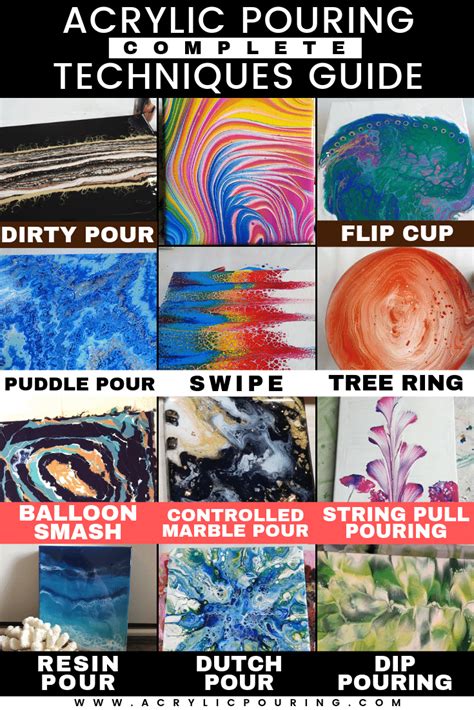Different Pour Painting Techniques. Before we started the process, we prepped the canvases with a coat of gesso*. Mica powder is very fine and if you add it to quickly it will fly off the paint and create a mess.

When you master the subtleties of these basic pour techniques, you will find that the more involved techniques become. While common, each of these fluid acrylic pour methods can produce amazing artwork. Experimenting with the different colors and techniques is a great stress reliever, and it’s even better that there’s really no right or wrong way to do it.
The Water Content Should Never Be More Than A Tablespoon Because Otherwise Your Paint Will Go Too Thin.
Not only the color theory, but also the different painting media are important. Here you get an insight into this topic and we show you the most important tips and tricks to mix your colors. Acrylic pouring is one of the most rewarding forms of acrylic painting for creative minds and those who want to have a little bit of fun.
It Was So Much Fun.
And apply all the techniques at once. It’s all about the beauty of color working together. Acrylic pouring can seem like a deceptively simple painting technique, but it can be a tricky thing to master!
Mix Each Color Separately (Paint And Medium).
With acrylic pouring you can isolate color related skills and learn how to use colors in interesting ways to see immediate. First, put the paint onto a palette. See more ideas about painting, fluid painting, pouring art.
Decoart Americana Acrylic Paint, Pouring Medium And Top Coat.
For all acrylic pouring techniques, the ratio of paint mix is very similar. Black negative space acrylic pour with an open cup. Pour painting, fluid painting, funnel pouring, acrylic pouring, dirty pouring, puddle pouring, flip cup pouring, fluid acrylic swipe painting, cell pouring, flow pouring, fluid acrylics, surface dipping, you name it!
Before We Started The Process, We Prepped The Canvases With A Coat Of Gesso*.
These acrylic paints are made by suspending pigments in acrylic resins. With puddle pouring, each paint color is individually mixed with a pouring medium. Using something sturdy like cardboard to place on top of the cup, flip the cup and board over and slide the flip cup over your surface and pull the cup straight up.
